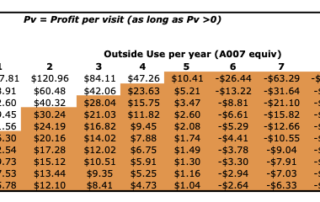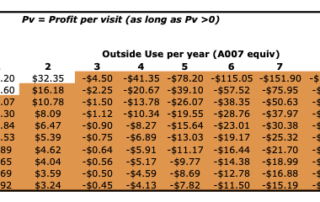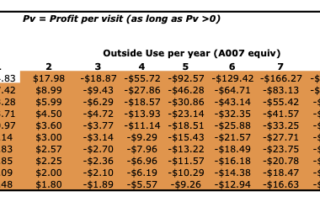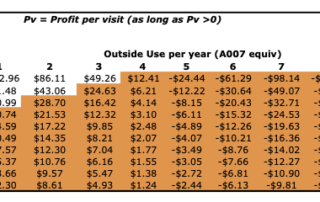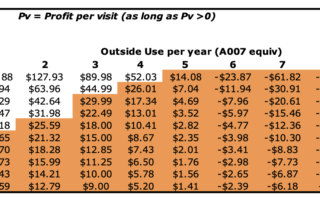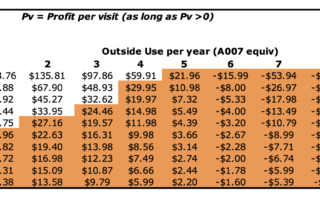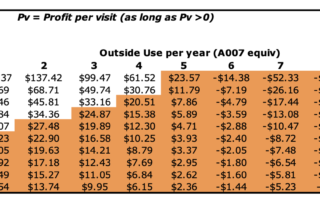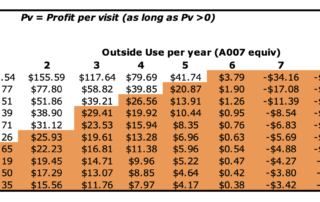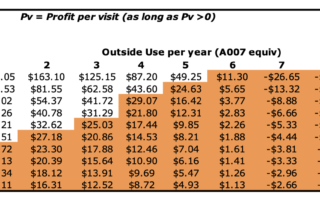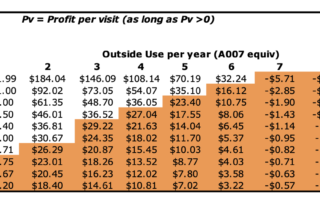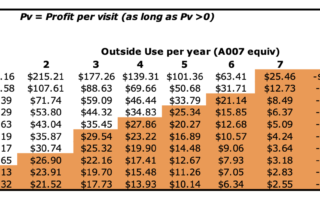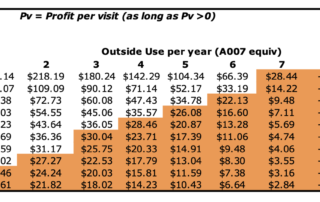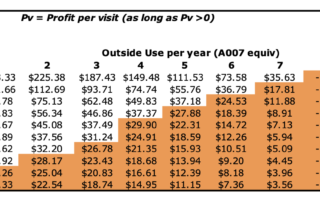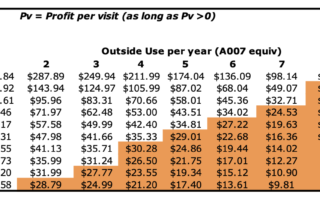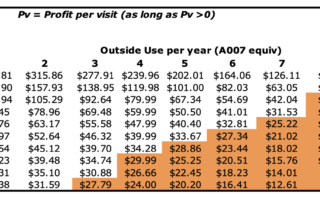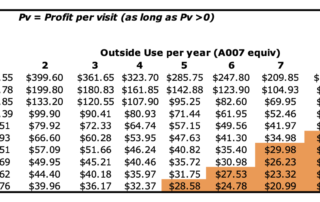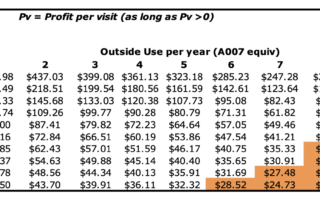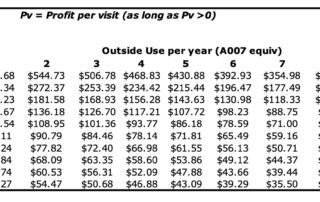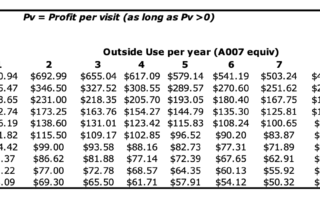FHO vs Fee-For-Service
FEMALE Patients
From a billing perspective, the profitability of rostering a patient under a FHO model versus billing on a fee-for-service basis depends on multiple variables:
- The total combined capitation payments for the patient.
- The frequency and amount of Outside Use negation.
- The frequency of visits to the rostering physician’s clinic.
Many physicians incorrectly assume that if a patient has multiple Outside Use negations, that it would be more profitable to not have that patient rostered and instead bill for seeing the patient only on a fee-for-service basis. However, this is not necessarily the case.
For example, consider a 57 year old female patient. The physician is paid $294.09 per year to care for this patient. This patient visits an outside walk-in clinic 4 times per year, amounting to a total negation of $151.80 (4 x A007 at $37.95 each). The net amount the physician is paid is $142.29. However, if this patient only visits the rostering physician 1 time per year, it is still much more profitable to still have the patient rostered because $142.29 is far more than the $37.95 that would be billed in a fee-for-service model.
The following are tables that summarize Outside Use versus Visit Frequency for each of the age ranges for female patients. It shows what the effective net “profit per visit” amounts to be under a FHO model, which can then be compared to an A007 billed under a Fee-For-Service Model.
- ORANGE denotes Fee-For-Serice is more profitable.
- WHITE denotes FHO model is more profitable.
Here are the equations and figures used in the above calculations:


